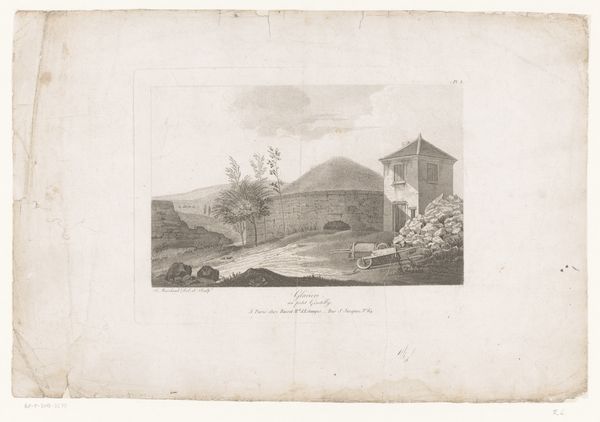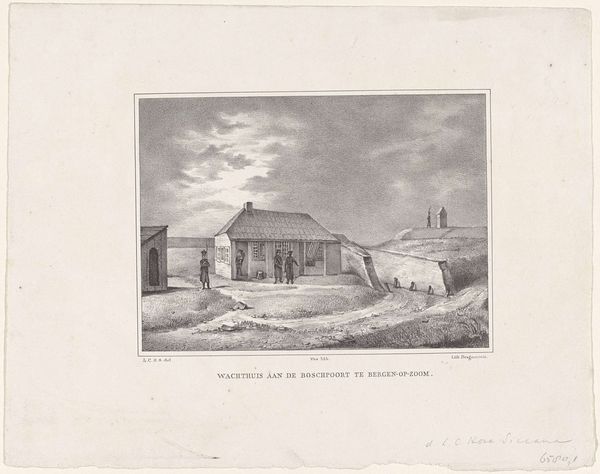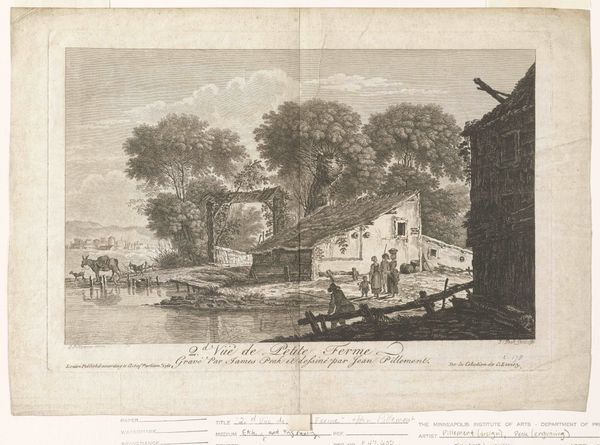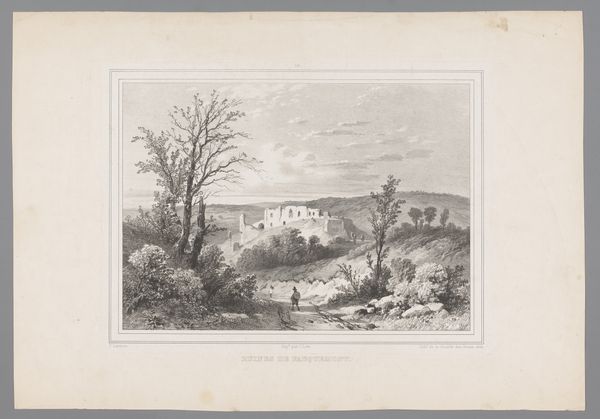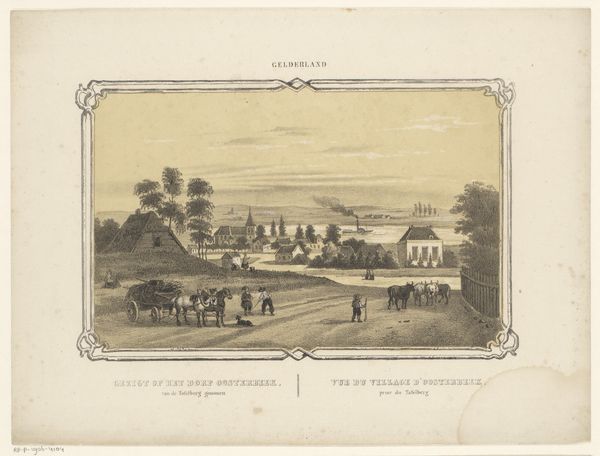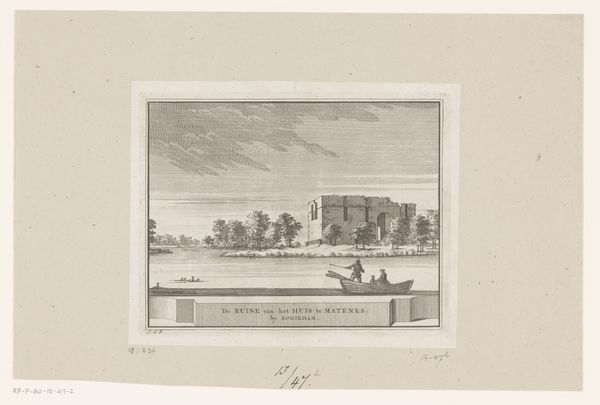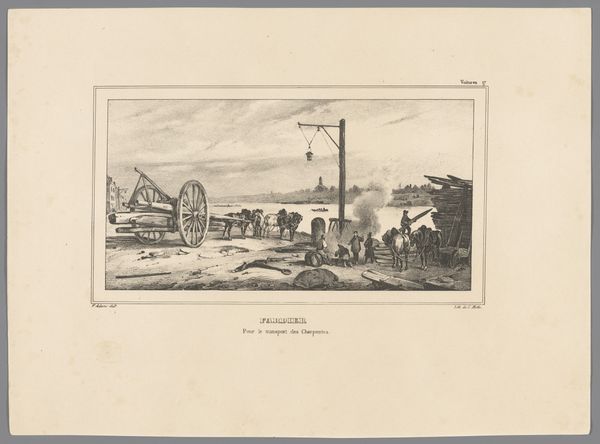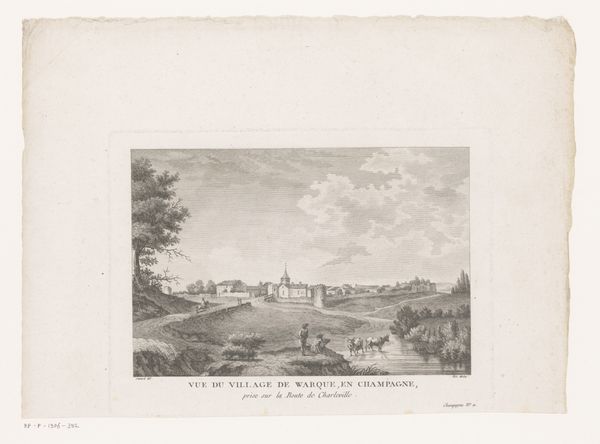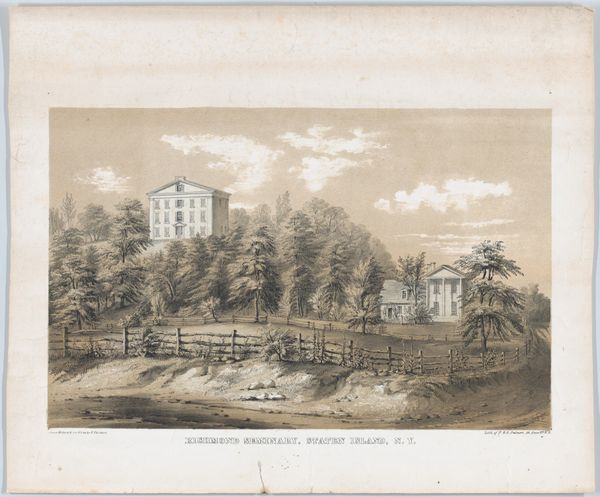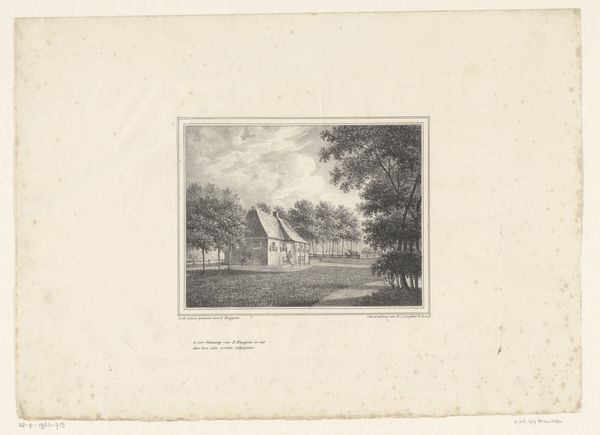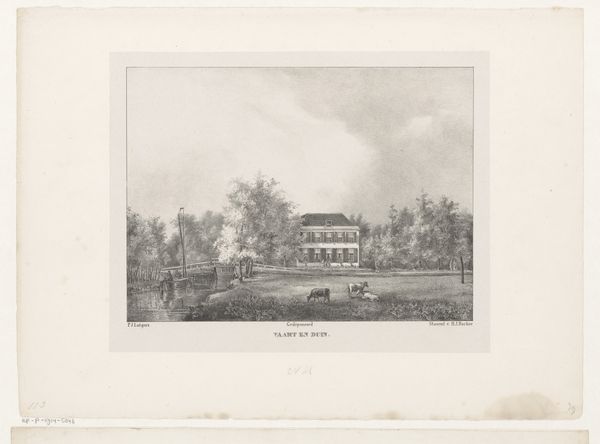
print, etching, engraving
# print
#
etching
#
landscape
#
engraving
#
realism
Dimensions: height 307 mm, width 444 mm
Copyright: Rijks Museum: Open Domain
Editor: So, this is "Zicht op de herberg van Rigi Kulm" from 1841, a print made by John Bachmann using etching and engraving. It's a pretty straightforward landscape. It almost feels… staged, like a backdrop for something. What strikes you about this piece? Curator: "Staged" is interesting. What does it mean to see this landscape, not as an objective view, but as a construction? Think about 1841. Tourism was changing landscapes, economies, and cultures. This image isn't just of a mountain inn. It’s about the experience being sold, a controlled and picturesque nature. Consider who had access to this experience – what social and economic factors dictated who could participate in this vision of nature? Editor: Ah, I see! It’s like, it looks natural, but it's really a curated version of nature meant for a certain clientele. Were these types of images common promotional tools for the burgeoning tourist industry at the time? Curator: Precisely. This is about power and perspective. Landscape art, then and now, has rarely been neutral. It either celebrates or obscures narratives around land ownership, exploitation, and access. What choices has the artist made about which details to include and exclude and how those choices shape our view? Editor: The even lighting, the neat arrangement of figures... it's selling a specific story. Curator: And what happens if we view those choices critically? Who is visible, who isn't? What activities are highlighted? Are there shadows of inequality or exploitation lurking in this seemingly pleasant scene? Think about what’s absent, as much as what is present. Editor: I guess I was initially looking at it purely aesthetically, but seeing it as a commentary on the tourist industry changes everything. Thanks! Curator: It’s a reminder that art, even a seemingly simple landscape, is always entangled with social and political realities. Hopefully this has empowered you to consider context as equally important to content.
Comments
No comments
Be the first to comment and join the conversation on the ultimate creative platform.
